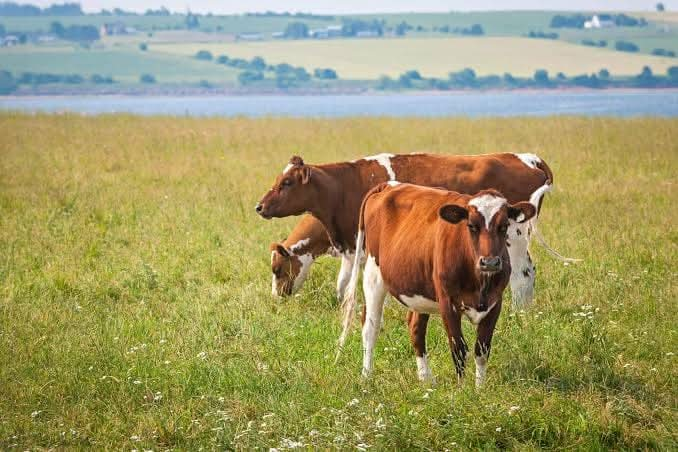What You Need To Know About Ayrshire cow
The Ayrshire cow, a dairy cattle breed originating from the county of Ayr in Scotland, is widely recognized for its excellent milk production, adaptability, and hardiness. This breed has carved a niche in the dairy industry due to its superior qualities and business advantages. Below is an intensive breakdown of the Ayrshire cow and its potential in business:
1. Characteristics of the Ayrshire Cow
a. Physical Features
Size: Medium-sized cattle, weighing 450–600 kg for mature cows.
Color: Predominantly red and white, with the red varying from deep mahogany to a lighter shade.
Horns: Curved outward and upward, although often removed for safety in commercial settings.
b. Milk Production
Produces 20-30 liters of milk daily, depending on feeding and care.
Milk is known for its moderate butterfat content (3.9–4.3%) and high protein levels (3.2–3.4%), making it ideal for butter and cheese production.
c. Adaptability
Thrives in various climates, from temperate regions to tropical zones.
Excellent for grazing systems, as they efficiently convert grass into milk.
d. Disease Resistance
Hardy and resilient against many common cattle diseases.
Longevity ensures sustained productivity over the years.
2. Business Opportunities with Ayrshire Cattle
a. Dairy Farming
The Ayrshire cow is a reliable choice for farmers aiming to establish or expand dairy businesses. Its high milk yield, quality composition, and cost-effective management make it a profitable option.
b. Value-Added Dairy Products
Ayrshire milk’s composition is perfect for producing premium dairy products such as:
Cheese
Butter
Yogurt
Ice cream
c. Breeding Programs
With rising demand for Ayrshire genetics, breeding and selling high-quality Ayrshire heifers or semen can be a lucrative venture.
d. Export Opportunities
Given their global demand, exporting Ayrshire cows, embryos, or semen to countries focusing on improving their dairy productivity offers additional revenue streams.
e. Organic Farming Systems
Ayrshire cows adapt well to organic systems due to their grazing efficiency and disease resistance, reducing reliance on expensive veterinary treatments.
3. Management Practices for Ayrshire Cows
a. Feeding
Requires a diet rich in forages like grass, silage, and hay.
Supplements like grains and concentrates improve milk yield.
b. Housing
Provide clean, well-ventilated shelters.
Grazing areas with shade and water sources enhance productivity.
c. Health Care
Regular vaccinations and deworming prevent diseases.
Routine check-ups ensure early detection of health issues.
d. Reproductive Management
Optimal breeding age: 15–18 months.
Calving interval: 12–14 months for maximum productivity.
4. Economic Advantages
Cost Efficiency: Low maintenance cost compared to other high-yield breeds like Holsteins.
Durability: Long productive lifespan ensures sustained returns.
Marketability: High demand for quality dairy products boosts profitability.
5. Challenges and Mitigation
a. Heat Stress
Mitigation: Provide cooling systems or adequate shade in tropical areas.
b. Competition from Other Breeds
Strategy: Focus on value addition and marketing the unique qualities of Ayrshire milk.
c. Initial Investment Costs
Solution: Opt for cooperative farming or government support schemes.
6. Ayrshire Cow Business Case Study
In countries like Kenya and India, the Ayrshire cow is a key player in small-scale and commercial dairy farming. Farmers report improved income due to the breed’s adaptability and consistent milk production. Additionally, cooperative societies and government programs have facilitated access to Ayrshire genetics, further boosting their prominence.
Investing in Ayrshire cows presents a robust opportunity for entrepreneurs in the dairy sector. Their adaptability, milk quality, and cost efficiency make them a strategic choice for both small-scale and large-scale farmers. With proper management and innovative marketing strategies, the Ayrshire cow business can deliver sustained profitability and contribute significantly to the dairy value chain.




